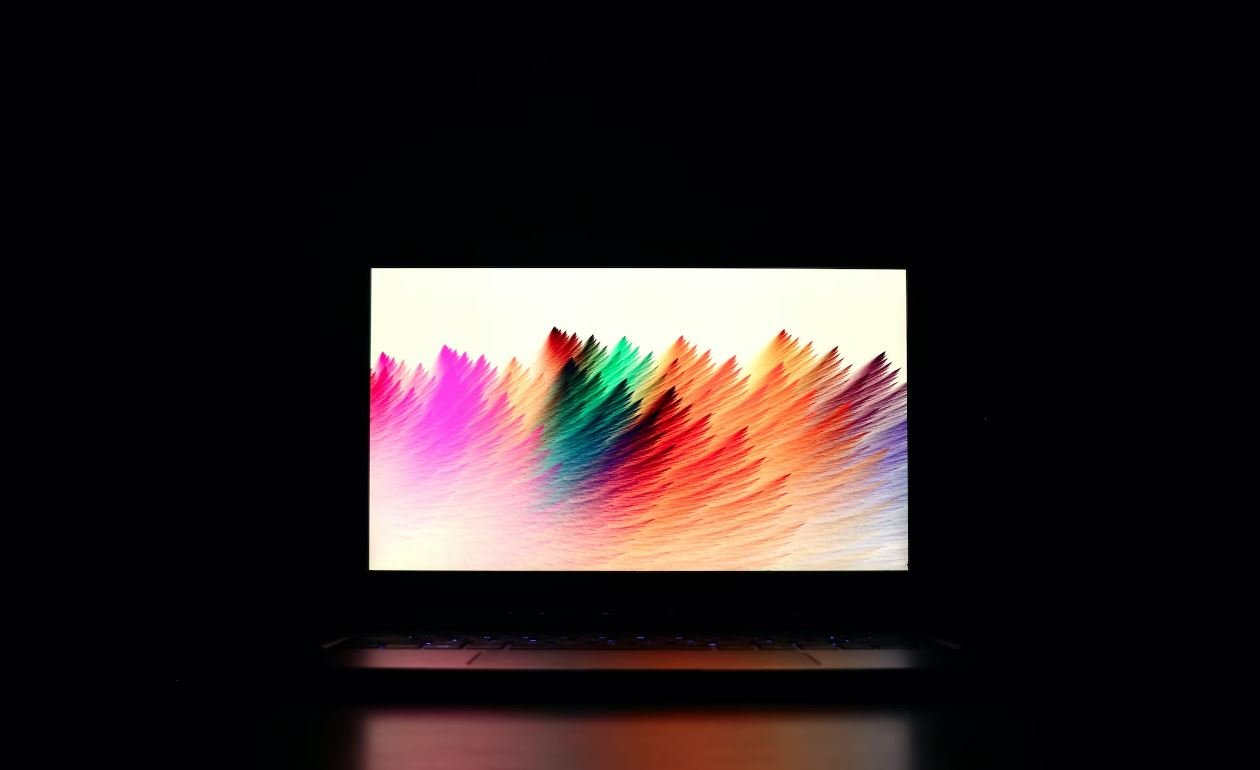GPT MBR
The process of partitioning a storage device and determining how it will be used by the computer’s operating system is crucial for data organization and efficient storage utilization. In the world of computer systems, two commonly used partitioning schemes include the GPT (GUID Partition Table) and MBR (Master Boot Record). Understanding the differences between GPT and MBR is essential for building and maintaining a well-functioning computer system.
Key Takeaways
- GPT and MBR are two partitioning schemes used in computer systems.
- GPT allows for larger storage capacity, supports more partitions, and provides better data integrity compared to MBR.
- MBR is the older, more widely compatible partitioning scheme but has limitations on storage size and number of partitions.
- UEFI systems generally use GPT, while legacy BIOS systems use MBR.
**GPT**, or GUID Partition Table, is a newer partitioning scheme that overcomes the limitations of the older MBR. GPT uses globally unique identifiers (GUIDs) to identify storage partitions rather than relying on physical cylinder-head-sector (CHS) addressing like MBR. This allows GPT to support larger storage capacity, typically in the terabytes range.
*Interestingly*, GPT provides an extra backup of critical partitioning data throughout the disk, making it more fault-tolerant and resistant to corruption. This redundancy ensures greater data integrity, reducing the risk of data loss due to partition table corruption.
In contrast, **MBR**, or Master Boot Record, is the traditional partitioning scheme used by older computer systems. It uses a small 512-byte sector to store the partition table and boot loader code. MBR supports a maximum of four primary partitions or three primary partitions and an extended partition.
*However*, the key limitation of MBR is that it can only handle storage devices up to 2 terabytes in size. Beyond this limit, MBR cannot effectively utilize the storage space or interact with additional partitions.
GPT vs. MBR: A Comparison
Let’s compare GPT and MBR across various aspects:
1. Storage Capacity:
| Partitioning Scheme | Maximum Storage Capacity |
|---|---|
| GPT | Up to 9.4 zettabytes |
| MBR | Up to 2 terabytes |
2. Number of Partitions:
| Partitioning Scheme | Maximum Number of Partitions |
|---|---|
| GPT | Over 128 partitions |
| MBR | Up to 4 primary partitions or 3 primary partitions and 1 extended partition |
3. Compatibility:
GPT is designed for modern UEFI (Unified Extensible Firmware Interface) systems, while MBR is compatible with both UEFI and legacy BIOS (Basic Input/Output System) systems. However, certain legacy operating systems might not support GPT.
Guidelines for Choosing GPT or MBR
When deciding whether to use GPT or MBR for your storage device, consider the following guidelines:
- For new systems or when using a large storage device, such as a multi-terabyte hard drive, **GPT** is recommended to utilize the full storage capacity and enjoy the benefits of enhanced data integrity.
- If compatibility with legacy systems is a concern, or if the storage device is below the 2 terabyte limit, **MBR** is a suitable choice.
Remember that the choice between GPT and MBR depends on the specific requirements and constraints of your computer system.

Common Misconceptions
GPT MBR
There are several common misconceptions surrounding the topic of GPT (GUID Partition Table) and MBR (Master Boot Record). Let’s address some of these misconceptions and clarify the facts:
- MBR cannot handle drives larger than 2TB – Although MBR has a limitation of 2TB for storage capacity, there are workarounds available such as using Extended or Logical Partitions, or converting the disk to GPT which removes this limitation.
- GPT is always better than MBR – While GPT is more modern and offers advantages like support for larger disks and more partitions, MBR still has its place for compatibility reasons, especially for older systems or specific requirements.
- MBR is insecure compared to GPT – The security of a disk partitioning scheme primarily depends on the operating system’s security measures rather than the partitioning scheme itself. Both MBR and GPT can be used securely depending on the implementation.
Disk and File System-related Misconceptions
Aside from misconceptions about GPT and MBR, there are other common misconceptions regarding disks and file systems:
- Formatting a disk erases all data permanently – Formatting a disk only removes the file system metadata, making the data appear as if it were deleted. It is possible to recover data from a formatted disk using specialized software until new data overwrites the old data.
- NTFS is superior to FAT32 in all cases – While NTFS is generally more efficient and secure than FAT32, there are certain situations where FAT32 may still be preferable, such as when using it on devices that need cross-platform compatibility, or when dealing with very small storage capacities.
- A larger allocation unit size always improves performance – While a larger allocation unit size can improve performance when handling large files, it can actually decrease performance when handling small files. The optimal allocation unit size depends on the specific needs and usage patterns of the data stored on the disk.
Performance-related Misconceptions
When it comes to performance, there are several common misconceptions that people often have:
- Having more CPU cores always results in better performance – While having more CPU cores can improve multi-threaded performance, it doesn’t necessarily guarantee better overall performance. Factors such as clock speed, cache size, and architecture also play significant roles.
- Clearing RAM increases performance – Clearing RAM unnecessarily can actually decrease performance since the system needs to reload data into RAM more frequently. The operating system is designed to manage RAM efficiently, so leaving it to the system’s memory management is usually the best approach.
- SSDs are always faster than HDDs – While SSDs are generally faster than traditional HDDs due to lack of moving parts, the specific performance of an SSD can vary depending on factors like the connection interface (SATA, NVMe, etc.) and the quality of the SSD itself.

GPT vs MBR: A Comparison of Data Storage Formats
In the world of data storage, two popular formats are GPT (GUID Partition Table) and MBR (Master Boot Record). Each format has its own characteristics and is used in different scenarios. This article aims to compare GPT and MBR in terms of partition limitations, support for large capacities, and compatibility with different operating systems.
The Battle of Partitions: GPT vs MBR
When it comes to partitioning a storage device, GPT and MBR have their differences. Let’s take a closer look at how they compare in terms of partition limitations and features:
| GPT | MBR |
|---|---|
| Supports up to 128 partitions per disk | Supports up to 4 primary partitions |
| Allows for unlimited logical partitions | Allows for extended partitions |
| Enables larger disk sizes (up to 9.4 zettabytes) | Has a limitation of 2 terabytes for disk size |
| Provides redundant partition tables for data safety | Relies on a single Master Boot Record |
GPT’s Vast Capacity Advantage
One of the key advantages of GPT over MBR is its ability to handle large disk capacities. Let’s take a look at some examples of GPT’s impressive capacity:
| Data | GPT Capacity | MBR Capacity* |
|---|---|---|
| High-resolution images (8MB each) | 1 billion images | 31 thousand images |
| Lossless audio files (50MB each) | 200 million audio files | 6 thousand audio files |
| HD movies (5GB each) | 10 million movies | 312 movies |
| 4K video footage (500GB each) | 2 million video files | 62 video files |
| * Approximate comparison based on average file size | ||
Operating System Compatibility
Another important aspect to consider when choosing between GPT and MBR is their compatibility with different operating systems. Here’s an overview:
| Operating System | GPT Compatibility | MBR Compatibility |
|---|---|---|
| Windows 10/8/7 (64-bit) | ✓ | ✓ |
| Windows XP/Vista (32-bit) | ✓ | ✓ |
| Mac OS X | ✓ | ✓ |
| Linux (most distributions) | ✓ | ✓ |
| Legacy Systems (DOS, Windows 95/98) | × | ✓ |
The Secure Choice: GPT with Data Redundancy
One notable feature of GPT is its redundant partition tables, which enhance data safety. Let’s see how this feature compares to MBR’s single Master Boot Record:
| GPT | MBR |
|---|---|
| Stores backup partition tables at the end of the disk | Relies on a single Master Boot Record at the start |
| Allows for easy recovery in case of table corruption | Table corruption can lead to complete data loss |
| Provides enhanced data integrity checks | Lacks built-in data integrity checks |
| Supported by modern firmware and UEFI systems | Compatible with both modern and legacy systems |
Comparing Performance: GPT vs MBR
Performance is an essential factor when choosing a data storage format. Here’s how GPT and MBR compare:
| GPT | MBR |
|---|---|
| Offers faster boot times for UEFI-based systems | Generally provides quicker boot times for legacy systems |
| Ensures more efficient disk utilization | Slightly less efficient in terms of disk utilization |
| Supports greater file metadata and attributes | Limited file metadata and attribute support |
| Ideal for modern systems with UEFI firmware | Compatible with both modern and legacy systems |
GPT: The Future-proof Choice
With its numerous advantages and compatibility with modern systems, GPT is becoming the preferred choice for data storage. MBR still holds relevance for legacy systems and specific use cases, but GPT offers better scalability and security. Consider your specific needs and future requirements before choosing between the two.
The Verdict
In conclusion, GPT and MBR serve different purposes in the realm of data storage. GPT outshines MBR with its support for larger capacities, flexible partitioning options, redundant partition tables, and compatibility with modern systems. While MBR may still have its place in legacy systems, the future-proof choice lies with GPT. Choose wisely to ensure optimal utilization, compatibility, and data integrity for your storage needs.
Frequently Asked Questions
What is GPT MBR?
GPT MBR stands for Guid Partition Table (GPT) Master Boot Record (MBR). It is a hybrid partitioning scheme that allows both GPT and MBR partitioning styles to coexist on the same disk.
How does GPT MBR work?
GPT MBR works by utilizing a combined partitioning scheme. It keeps the GPT partition table at the beginning of the disk and reserves a small area at the end of the disk for the MBR partition table. The MBR partition table acts as a bridge between legacy systems that rely on MBR and modern systems that support GPT.
Why would I use GPT MBR?
GPT MBR is useful in situations where you need to maintain compatibility with both legacy BIOS systems and modern UEFI systems. By using GPT MBR, you can ensure that your disk is readable by both types of systems.
Can GPT MBR be used with any operating system?
Yes, GPT MBR can be used with any operating system that supports GPT or MBR partitioning schemes. It provides compatibility across various platforms and allows you to choose the operating system that best suits your needs.
Are there any limitations or drawbacks to using GPT MBR?
While GPT MBR provides compatibility, it is important to note that the MBR partitioning scheme has some limitations. For example, MBR supports disks up to 2 terabytes in size and can have a maximum of four primary partitions. GPT, on the other hand, does not have these limitations. Additionally, some older operating systems may not fully support GPT MBR.
How do I create a GPT MBR partition scheme?
To create a GPT MBR partition scheme, you can use disk management tools or partitioning software that supports both GPT and MBR partitioning styles. These tools will guide you through the process of setting up the partition tables and creating partitions based on your requirements.
Can I convert an existing partition scheme to GPT MBR?
Converting an existing partition scheme to GPT MBR is possible but can be complex. It typically involves backing up your data, reformatting the disk, and recreating the partitions using GPT MBR. It is recommended to consult the documentation of your disk management tools or seek professional assistance for this process.
Is GPT MBR compatible with RAID configurations?
Yes, GPT MBR is compatible with RAID (Redundant Array of Independent Disks) configurations. However, it is important to ensure that your RAID controller and operating system properly support GPT and MBR partitioning schemes to avoid any compatibility issues.
Can I dual-boot operating systems with GPT MBR?
Yes, it is possible to dual-boot operating systems with GPT MBR. By creating appropriate partitions for each operating system, you can install multiple operating systems on a disk using GPT MBR. However, you should ensure that each operating system supports the chosen partitioning scheme.
Where can I find more information about GPT MBR?
For more detailed information about GPT MBR, it is recommended to refer to the documentation of your disk management tools, the documentation of your operating system, or online resources that specialize in disk partitioning and management.




